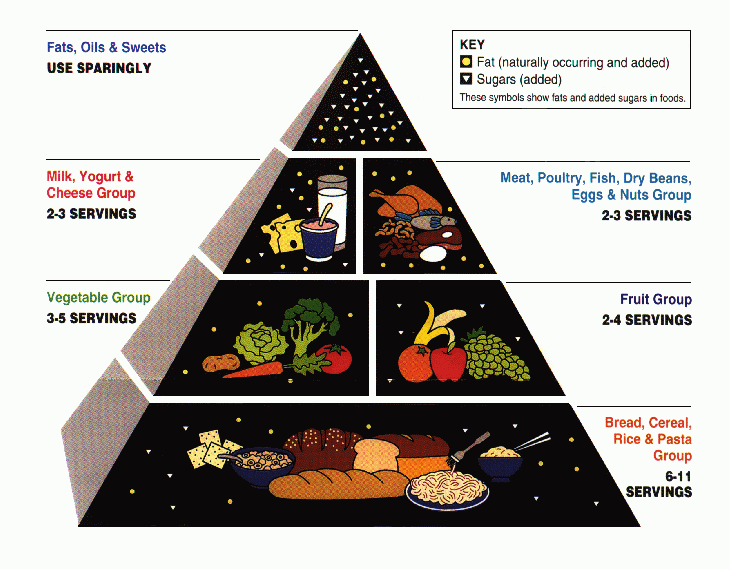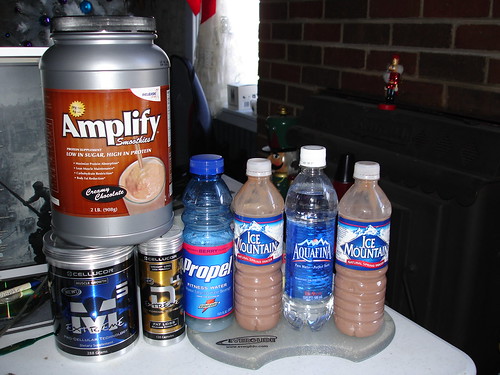
"A Craving Is An Urge or a desire for a specific food what kind of food varies for each person, says Susan Mitchell, Ph.D., president of Practicalories, a nutrition consulting firm in Winter Park, FL, and co-author of I�d Kill for a Cookie: A Simple Six-Week Plan to Conquer Stress Eating (Dutton, 1997)".
Mitchell, who believes overeating is usually the result of our reaction to stress, says that when we�re under stress, angry, or even tired, we eat differently for three reasons: It�s a normal stress reaction. Some people may sleep more, some may drink more, others overindulge with food. It�s the normal response some people have. We eat for comfort. Think back to the holidays what foods make you warm and fuzzy? In times of stress, those are the foods you tend to reach for.
We�re suffering from diet deprivation. When you�re on a diet, you deprive yourself of certain foods, and then you end up overindulging on those very same foods you were trying to avoid. The problem is, no one leads a stress-free life. Stress is ever-present and essential, so learning to deal with it effectively is important. What is a stressful event for one person may be pleasurable for another. According to the National Mental Health Association, what matters is not the situation itself, but how it is perceived. Therefore, it�s important to learn how you respond to stress and how to minimize its negative impact.
Craving Carbohydrates
Many stress-related cravings are for carbohydrate-rich foods, such as cookies, popcorn, and doughnuts. Some researchers believe that carb cravings may be your body�s attempt to boost the brain�s production of serotonin, a neurotransmitter that produces feelings of calm and well-being. You may crave certain foods because your body remembers the physiological effect the food had when you consumed it in the past. Mitchell reports that the favorite cravings for women are chocolate, cookies, cake, pie, and other sweets; while men long for fat- and protein-rich foods, such as pizza, hot dogs, and burgers.
Cravings for foods with a rich sugar/fat combination are very common. Unfortunately, these foods can lead to overeating, and consequently, weight gain, since they trigger a series of chemical reactions that can increase your appetite. Remember, although eating sugary foods can provide a temporary boost of energy, due to increased blood-sugar levels, an energy-sapping plunge is sure to follow. This can be a big problem for those who skip meals or let too much time lapse between them. Since the body needs food fuel every four to five hours, you�re setting yourself up for cravings if you tend to do this. When blood-sugar levels drop or energy wanes, the need to reach out for a food that will make you feel good can be overpowering.
Comfort Foods
The texture of what you crave often reflects your mood. If you�re sad, for example, you may want to reach out for something soothing, such as ice cream or mashed potatoes. If you�re feeling tense or angry, you�ll probably crave something crunchy, such as potato chips or popcorn. For some, the chewing itself relieves tension. For others, comfort foods such as pudding or ice cream, may relieve stress because we tend to associate them with pleasant feelings. As children, we were often given ice cream or candy, especially when we were sad or upset. As adults, in times of stress we often crave the comfort foods that recall a time when we felt safe and secure chicken soup, ice cream, or a special dish only mom used to make. Consider how you were raised with food and what food meant to you. Family dynamics plays a very big role in whether you diet or not, what you eat or don�t; it�s more than just foods that are �good� or �bad,� says Mitchell.
Comfort Foods (cont.)
When it comes to our weight, how we were raised with food plays a huge role. According to Laurel Mellin, M.A., R.D., associate clinical professor of family and community medicine and pediatrics at the University of California, San Francisco School of Medicine, and author of The Diet-Free Solution (Regan Books, 1998), only five to 25 percent of one�s weight can be attributed solely to genetics the rest is environmental. Mellin, as the result of two decades of research, developed The Solution for adults and The Shapedown Program for children and adolescents, which is available in 450 hospitals nationwide. According the Journal of the American Dietetic Association, The Solution is the first method that actually causes lasting weight loss. This is due to the fact that there are no diets or pills you turn off the drive to overeat from within.
According to Mellin, early in life we all learned or did not learn the powerful skill of soothing and comforting ourselves from within. Those who learned it never turn to food for solace, because they don�t need to. Fortunately, this skill can be learned at any age, and when it�s learned, food loses its seductive power over us. We automatically eat less because we want less. We learn to find alternative ways for dealing with stress and emotions. Mellin believes that other methods are unsuccessful because they are external (the results are fleeting) and/or they set limits. The Solution skills, which include strong nurturing, effective limits, body pride, good health, balanced eating, and mastery living, are so successful and effective because they are internal; the skills come from within. For example, when you learn to ride a bike, you never forget how. The same principle applies here; once you learn the skills, you never forget them.
The drive to overeat is very primitive and very deep, says Mellin. Among Americans the most common excessive appetite by far is for food at least 50 percent of American adults admit to using food binges to cope with the stresses and strains of living.
Focus On Feelings
Losing weight and keeping it off is possible, but you must be prepared mentally. Once you realize how you may use food to distract you from uncomfortable emotions, you can better identify your emotional needs and look for ways to meet them more directly rather than turning to food. By identifying your patterns you can help predict when unhealthy eating might occur and allow you to prepare a preventive strategy. For example, strong nurturing is the first of the six steps used in The Solution. According to Mellin, nurturing yourself does not mean indulging yourself. Instead, it is determining what you need from the feelings that arise. The simple nurturing process amounts to asking yourself three questions:
1. How do I feel?
2. What do I need?
3. Do I need support?
The nurturing cycle's role is to honor our emotional essence, says Mellin. All feelings are valuable, even the difficult ones. The more often you ask yourself how you feel, the more accurate your answers will be. The more frequently you think about what you need, the easier it will be to determine what your true needs are. Don�t just say I�m angry, I need some potato chips. That�s what you want, that�s not what you need. Strong nurturing enables us to identify our true needs which are masked as a desire to eat and meet them, says Mellin.
According to Mellin, stress and upset are not feelings. Continue exploring until you find the true feelings behind the smokescreen. Then check that the feeling and the need correspond. For example, sadness suggests the need to cry, not eat. Unfortunately, many people get their wires crossed. When they�re tired they may think they�re depressed, and as a result, eat. Learn to meet the logical need. If you�re tired, sleep; if you�re hungry, eat; if you�re lonely, call a friend; if you�re bored, find a new interest. It may help to make a needs list. For example, When I feel____I usually need____. According to Mellin, we�ll never give up food for comfort until our lifestyle is nurturing. Many of us do things because we should or because it�s expected, but we need to learn to give up the activities that don�t meet our needs and substitute those that do. Pursuits we see as worthy can take us away from anxiety quickly. Whatever you feel is a meaningful contribution, such as listening to a friend, volunteering, or praying, is a worthy pursuit.
Calming The Cravings
Mellin believes we need to take time each day to restore our inner balance. Restoring ourselves requires time to rest, reflect, express, and create, says Mellin. It�s time devoted to pleasures that indulge us without harm, such as a walk on the beach, picking flowers in the garden, or taking a snooze. Learn to be aware of your feelings since it�s very easy to fall back on familiar coping habits, such as overeating or using food for comfort. Sometimes we really do need a temporary escape, but food doesn�t have to be the answer. You can break the cycle of reaching for food in times of stress by consciously working at it, Mitchell says, and there are three ways you can do this.
1. "Be prepared with a new outlet; read a book or take a bubble bath. Consciously replace the eating habit with a new habit."
2. "You must have structured eating habits. If you tend to survive on caffeine all day, your stress and craving levels will be higher."
3. "One of the best things you can do is to graze that is, eating a little throughout the day. As a result, the body is more satisfied and less stressed and you�ll have fewer cravings."
If you can understand why you are craving a particular food, you may be able to overcome it by dealing with the cause. Keep a journal. Understanding what you crave and when can be helpful in finding substitutes you can feel good about.
Uncover the sensation your body truly craves. Ask yourself, Is the craving for something sweet, cool, or salty? Or, Do I want texture a food that is crunchy, chewy, or creamy? Then think of a low-fat way to meet that. When you understand the reason behind your craving, but still feel the urge to act on it, you�re able to substitute a lower-calorie, low-fat, or low-salt replacement, or even limit your portion of the craved food. For instance, if you�re eating to get rid of tension, chew sugar-free gum instead of potato chips and see if it relaxes you. If you�re craving something specific and nothing else will do then it�s probably best to satisfy your desires; otherwise you�re setting yourself up for a binge situation. It�s always OK to give in to any craving in a reasonable amount, says Mitchell. Listen to your body, if you really crave chocolate, have a little. Smell it, taste it, savor it; then move on.
When you allow yourself to eat in accordance with hunger and satiety and have foods of all kinds in moderation, you�ll be less vulnerable to stress-induced overeating or cycles of deprivation followed by bingeing. Mellin believes that forcing ourselves to eat in a certain way suggests that our food and our weight are more important than we are. Only with an acute awareness of our feelings and needs can we balance our competing priorities of health and pleasure and be sensitive to our bodies� actual need for nutrition.
Learning to find outlets other than food for regulating your emotions is the key to successful and permanent weight loss. In fact, says Mellin, the lost weight may seem like an afterthought, a side effect, of small but powerful adjustments within.



